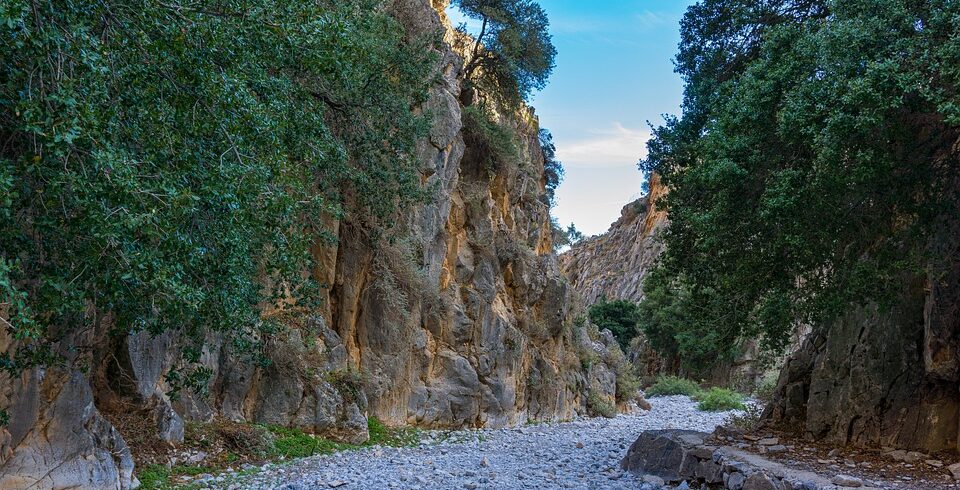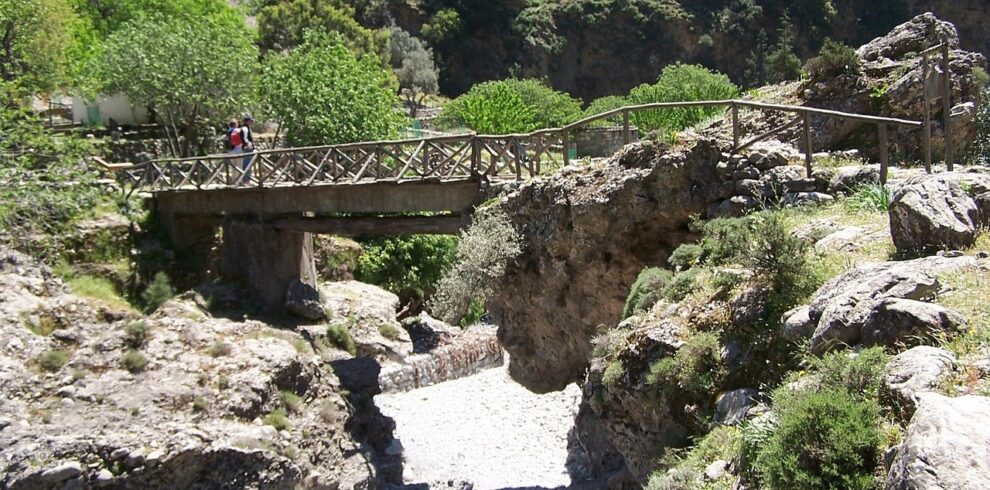- 4
- 1
- 4
- 2
- 1
- 3
- 1
- 3
- 1
- 3
Sfakia
Sfakiá (Greek: Σφακιά) is a mountainous area in the southwestern part of the island of Crete, in the Chania regional unit. It is considered to be one of the few places in Greece that have never been fully occupied by foreign powers. With a 2011 census population of 1,889 inhabitants living on a land area of 467.589 km2 (180.537 sq mi),[2] Sfakia is one of the largest and least densely populated municipalities on the island of Crete.
The etymology of its name is disputed. According to the prevailing theory, it relates to its rugged terrain, deriving from the ancient Greek word σφαξ, meaning land chasm or gorge.[3]
The road from Chania to Sfakiá crosses the island from north to south, through the village of Vryses. From this village the route crosses the White Mountains (Lefká Óri) to Hóra Sfakíon (35°12′N 24°08′E) by the Libyan Sea. Halfway from Vrisses to Hóra Sfakíon is the fertile plateau of Askifou, surrounded by high mountain peaks. From here to Hóra Sfakíon the road is particularly spectacular. The road hugs the western slope of the Imbros Gorge offering scenic views. Another scenic route is that leading from Kapsodasos to the plateau of Kallikratis, northeast of Hóra Sfakíon.
There are many beaches in Sfakiá which do not see the numbers of tourists of the northern coast. More adventurous visitors can follow the European hiking footpath E4 which crosses Crete through Sfakiá’s mountains. The coastal villages are not connected by a coastal road, but can be reached by ferry boats.
Not far east from Hóra Sfakíon is Frangokastello, literally “Frankish castle”. The Venetian fortress here was built in 1371 to deter pirates and unsuccessfully, to control Sfakiá. It is largely ruined but is picturesquely set on a wide sandy beach with the towering White Mountains behind. Daskalogiannis was captured here in 1771.
Accessible only by boat from Sfakiá is Loutro, a small seaside village with some archaeological ruins, a few houses, small hotels and tavernas. Loutro is car-free; cars must be parked in Hóra Sfakíon or Paleohóra. In the north of Sfakiá is the fertile plain of Askyfou. The Sfakía region is crossed by many gorges, among which is the famous Samaria Gorge. All these gorges run from north to south and all end in the sea. Many of them can be walked, several even by inexperienced walkers.
The region is inhabited by rare animals, like vultures and eagles, and the kri-kri (or agrimi), the wild Cretan goat. The coast of Sfakiá is on the Libyan Sea, which is inhabited by a diminishing fish population, but occasionally dolphins, and even whales may be seen. The idea of inaccessibility and ruggedness has played a key role in how Sfakia has been represented since at least the 18th century and it is reiterated in various ways today by tourists and locals.[4]
The local speciality, “Sfakian Pies”, are thin pancakes filled with mizithra cheese and served drizzled with honey.



